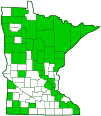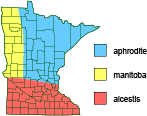Aphrodite fritillary
(Argynnis aphrodite)
Conservation • Description • Habitat • Ecology • Distribution • Taxonomy
|
|
|||||||||||||
Description |
Aphrodite fritillary is a medium-sized fritillary butterfly. The coloration is somewhat variable. The wingspan is 2½″ to 3¼″. The uppersides of both wings are orange, cinnamon-brown toward the center, with black stripes, spots, and chevrons. On the outer margin there is a band (marginal band) of spots that have dark borders and are separated by heavy, dark veins. On most individuals the spots on the forewing band, especially toward the wing tip, are black and indistinct, giving the appearance of a broad black border. On some individuals all of the spots in this band are orange and distinct, even at the wing tip. The spots on the hindwing band are always orange, never black. There is a submarginal band of chevron-shaped black spots, a postmedial band of round black spots, and a medial band with black stripes. The wing veins of the middle portion of the forewing are not bordered with black scales. There is a black spot at the base of the forewing below the forewing cell. This “extra” black spot is a unique identifying feature of this species. The underside of the forewing is mostly orange, orangish-brown toward the center, with an orangish-brown marginal band, black markings mirroring those on the upperside, and a few large white spots near the tip. The underside of the hindwing is reddish-brown, with a submarginal row of 7 silvery spots, a postmedial row of 6 large and 1 small silvery spots, and several silvery spots in the discal area. On S. a. alcestis, the two rows of spots are separated by a narrow yellowish band. The yellowish band does not surround any part of the large postmedial spots. On S. a. aphrodite there is no discernible yellow submarginal band. The eyes are yellowish-green. The caterpillar is mostly black and up to 2¼″ long. The head is orange above, black below. Each abdominal segment has 5 branched, spike-like projections (scoli), one on the upper (dorsal) surface, and on each side one in the subdorsal area and one in the spiracular area. The lower half of the subdorsal and spiracular scoli are orange or tan. The dorsal scoli are all black. Mature caterpillars are found in late May and June. |
Size |
Wingspan: 2½″ to 3¼″ |
Similar Species |
Great spangled fritillary (Argynnis cybele) is a slightly larger butterfly, with a wingspan of up to 3½″. On most individuals all of the spots in marginal band of the upperside of the forewing are orange and distinct, even at the wing tip. The wing veins of the middle portion of the forewing are thick. There is no “extra” black spot at the base of the forewing. On the underside of the forewing the white spots at the tip are smaller. The yellowish band separating the rows of silvery spots on the underside of the hindwing is wide, is always present, and partially surrounds all of the postmedial spots. The eyes are brownish-orange. |
Habitat |
Cool areas; moist prairies, fields, forest edges and openings, and roadsides. |
Ecology |
Season |
One brood; late June to early September |
Behavior |
|
Life Cycle |
Males emerge in late June or July, 2 to 4 weeks before the females. Females lay eggs on the ground near violets in late August or early September, shortly before they die. Males die before females. The eggs hatch in the fall. The newly hatched caterpillars overwinter, not feeding until the spring. |
Larva Hosts |
violet leaves |
Adult Food |
Flower nectar |
Distribution |
||
|
Sources 7, 21, 27, 29, 30, 71, 75, 82, 83. Biodiversity occurrence data published by: Minnesota Biodiversity Atlas (accessed through the Minnesota Biodiversity Atlas Portal, bellatlas.umn.edu, 6/15/2025). |
|
| 6/15/2025 | ||
|
There are seven, eight, or nine named subspecies of Argynnis aphrodite in North America, depending on the source. Three of these occur in Minnesota. The area of overlap of the subspecies is very narrow, suggesting reproductive incompatibility. A. a. aphrodite is an East Coast subspecies whose range extends into the Great Lakes region, A. a. alcestis occurs in the tallgrass prairies of the southern Great Plains, and A. a. manitoba occurs in the northern Great Plains and Rocky Mountains. The subspecies are distinguished by size and brightness. |
|
Occurrence |
||
Common |
||
Taxonomy |
|
Order |
|
Superfamily |
Papilionoidea (Butterflies) |
Family |
|
Subfamily |
Heliconiinae (fritillaries and longwings) |
Tribe |
|
Subtribe |
Argynnina |
Genus |
Argynnis (greater firtillaries) |
Subgenus |
Speyeria |
A recent analysis of the tribe Argynnini (Simonsen et al., 2006), based on previously published morphological and new mitochondrial DNA data, resulted in a reclassification of the entire tribe. The study found no reason to split the “larger fritillaries” into a large number of genera, and proposed uniting them all in the genus Argynnis. The genus Speyeria is therefore included as a subgenus. A later study of mostly North American butterflies (Zhang, et al., 2020), based on genomic sequencing, supported moving Speyeria to a subgenus of Argynnis. The move has not been universally accepted. Zhang suggests that the reasons are historic, not scientific: Several generations of American naturalists were raised being accustomed to the name Speyeria and are less familiar with the name Argynnis, thus being resistant to abandoning Speyeria as a genus name. |
|
Subordinate Taxa |
|
Alcestris Fritillary (Argynnis aphrodite alcestis) Aphrodite fritillary (Argynnis aphrodite aphrodite) Aphrodite fritillary (Argynnis aphrodite byblis) Aphrodite fritillary (Argynnis aphrodite cullasaja) Aphrodite fritillary (Argynnis aphrodite whitehousei) Aphrodite fritillary (Argynnis aphrodite winni) Columbian Fritillary (Argynnis aphrodite columbia) Ethne Fritillary (Argynnis aphrodite ethne) Manitoba Fritillary (Argynnis aphrodite manitoba) |
|
Synonyms |
|
Speyeria aphrodite Speyeris aphrodite |
|
Common Names |
|
Aphrodite fritillary |
|
Glossary
Scolus
A spiny, branched projection from a larval body wall, the branches terminating with a single stiff, hair-like or bristle-like tip. Plural: scoli.
Spiracle
A small opening on the surface of an insect or arachnid through which it breathes.
Visitor Photos |
||
Share your photo of this insect. |
||
This button not working for you? |
||
|
||
MinnesotaSeasons.com Photos |
||
Argynnis aphrodite aphrodite Subspecies identification based on range, not on morphology |
||
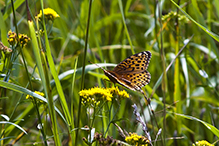 |
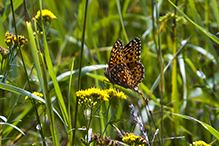 |
|
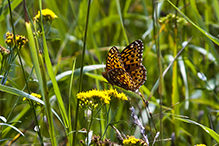 |
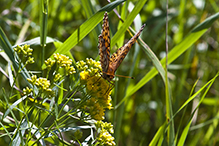 |
|

Slideshows |
|

Visitor Videos |
||
Share your video of this insect. |
||
This button not working for you? |
||
|
Other Videos |
||
Aphrodite Fritillary (Argynnis aphrodite) Butterfly on the Superior Hiking Trail |
About
Uploaded on Jul 21, 2010 HD macro movie of a butterfly in MN, I believe I have identified it correctly in the title. I saw this guy while hiking the Superior Hiking Trail along Minnesota's Northshore last week. |
Aphrodite Fritillary |
About
Uploaded on Jul 13, 2011 An Aphrodite Fritillary butterfly. Filmed by Damienf77: |

Visitor Sightings |
||
Report a sighting of this insect. |
||
This button not working for you? |
||
|
|
MinnesotaSeasons.com Sightings |
||

Created: 12/10/2009 Last Updated: © MinnesotaSeasons.com. All rights reserved. |
